By Bill Adams
Observations from the 2024 FDIC include features I personally liked, or disliked, and some I don’t understand. Due to the crowds and commotion in setting up, vendors were not interviewed. Opinions are from a past-his-prime player no longer active in the fire service. Comments made, questions asked, and what I’d do might be germane to today’s purchasers. Photos courtesy of Kimberly Adams.
Often, photographs taken in haste at the show are brought home and later analyzed without the benefit of notes or a brochure. It happened a couple times this year.

Photo 1. I stared at this Pierce pump panel for weeks trying to recall what the removable box was standing up in the running board hosewell. It looked like an automated order taker at a fast-food restaurant or a sign-yourself-in screen at the doctor’s office. I contacted a Pierce representative. It is a portable controller for an Actus Traffic Regulator Sign mounted on top of the rig. I trust it’s not tethered too close to the apparatus, allowing the operator to dodge inattentive or impaired drivers.

2. and 3. I couldn’t remember why Photo 2 (left) was taken of a neatly laid out and compact Alexis pump panel on a 1,500-gpm pumper. The enlarged Photo 3 (right) shows what some call the tank fill line labelled recycle. I’ve never seen one called recycle but it’s legal. NFPA 1900 only specifies the exact wording on a fire pump’s two master gauges – which many manufacturers don’t adhere to!
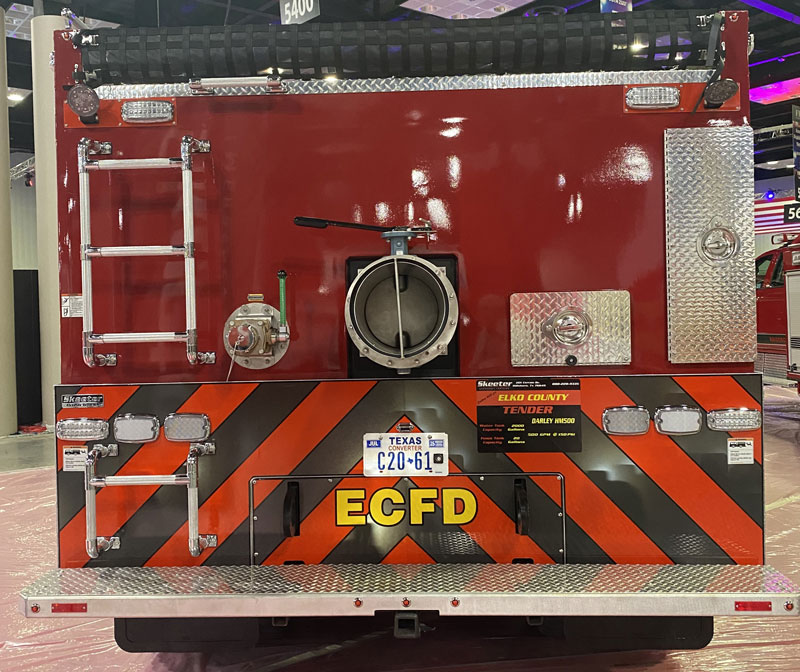
4. This Skeeter 2,000-gallon tender (aka tanker) has a not commonly found round dump valve at the rear with a manual swing-to-open butterfly valve. The 2.50-inch hose connection is a discharge.
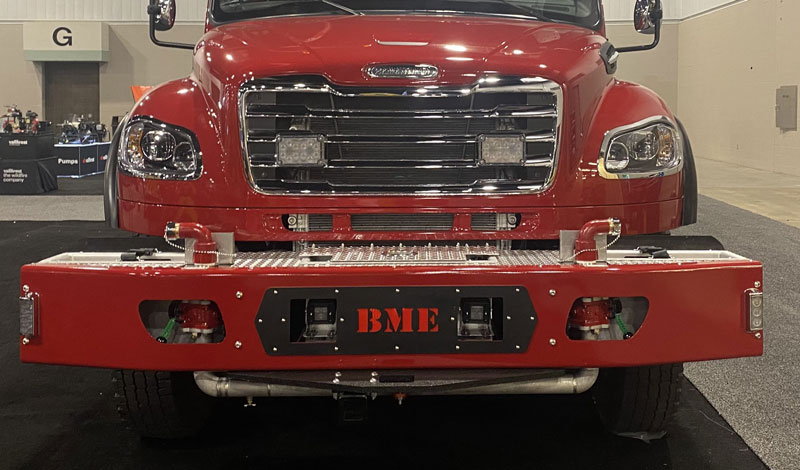
5. The shut-off valves controlling this BME wildland rig’s bumper discharge valves are accessible through holes in the bumper’s front facia.

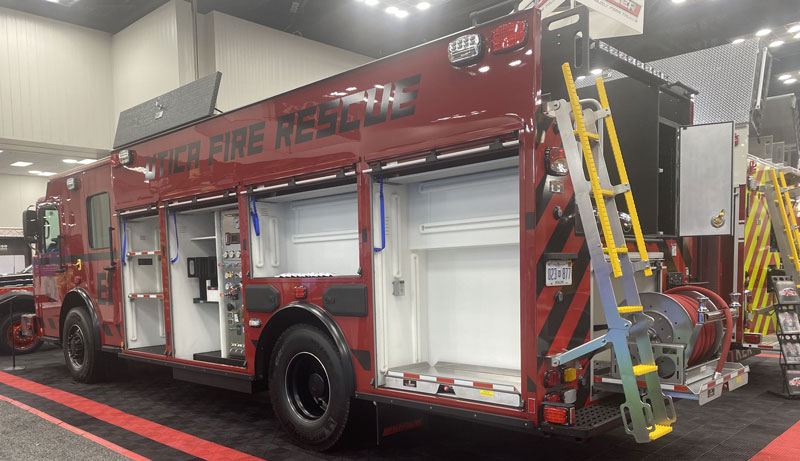
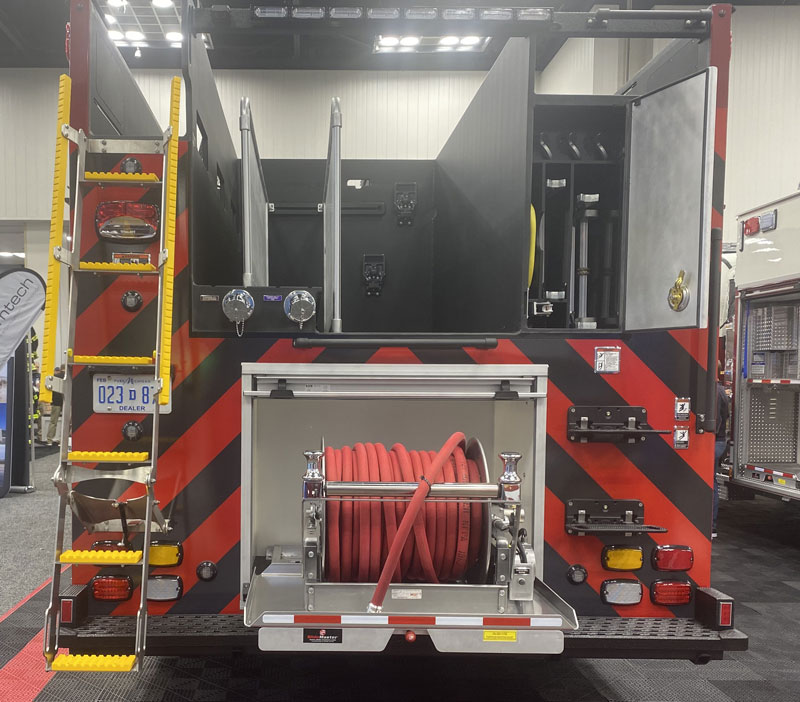
6. 7. 8. Spencer usually displays a unique rig or two at the trade shows. This year was no different. Other manufacturers displaying non-metallic bodies were mostly on tankers and initial attack apparatus. Spencer showed what I would describe as a large pumper-rescue style rig on a custom chassis. There was a full-through compartment behind the cab. The compartment ahead of the rear wheels had a fully enclosed pump house and operator’s panel on the driver’s side. Its forward portion had a couple transverse preconnects in trays with full through storage above. The rear features an access ladder found with aggressive steps and handrails common on many of their rigs. There’s a rear slide-out booster reel; two rear 2.50-inch discharges and slide-in storage for ladders, pike poles, and a backboard. It has a decent sized hosebed with access steps at its front to access upper coffin compartment(s) at the front of the body. The rear fold-down access steps are wider than normally seen. Individual lower rear warning and chassis lights were two by two – one set above the other. Adjustable tracks for shelving are an integral part of the body.

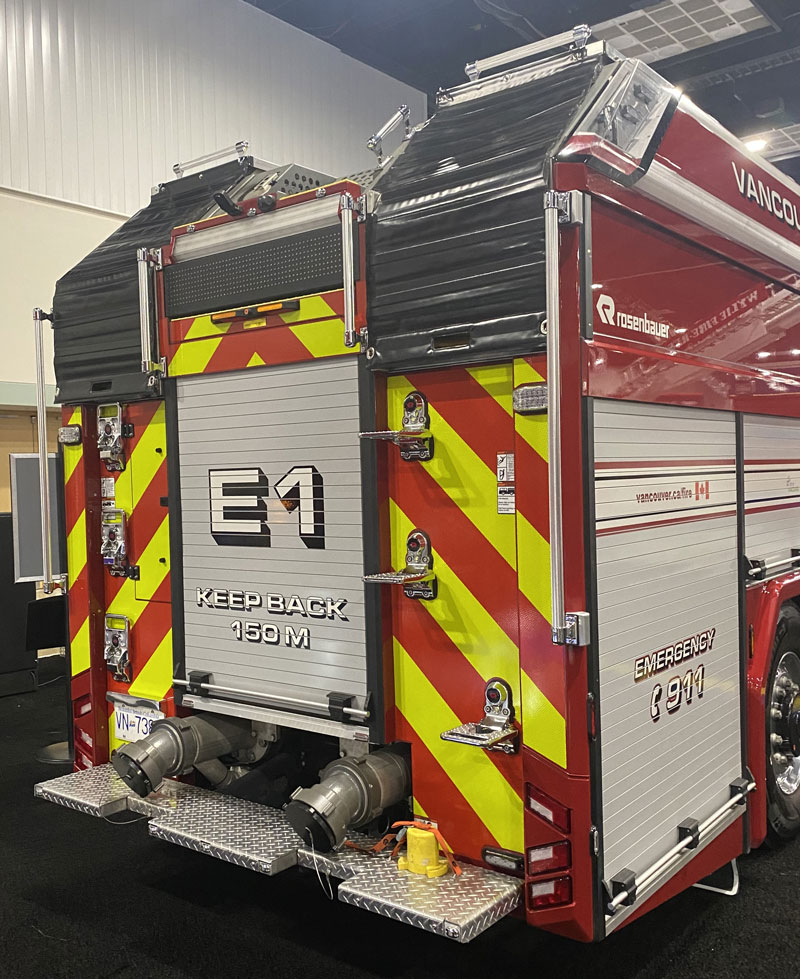
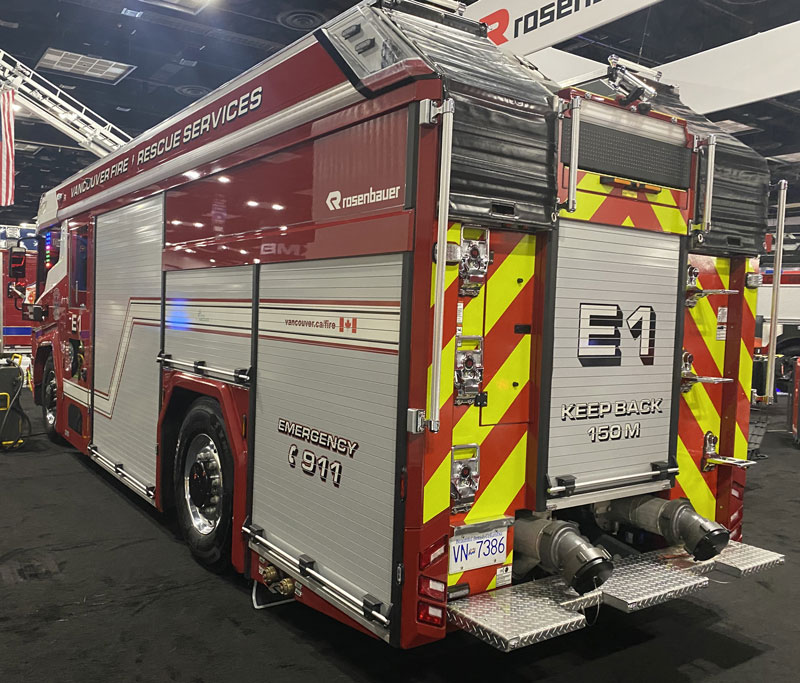
9. 10. 11. Rosenbauer’s RTX for the Vancouver Fire & Rescue Services has a modernistic design. It has a 2.50-inch discharge through the front bumper fascia reduced to 1.50-inch – without a front hosewell for a preconnect. The rear had two 6-inch suction inlets with the rear step notched to accommodate hose connected to the downturned elbows. On the driver’s side beneath the compartment behind the rear wheels are two small diameter Storz fittings for an onboard foam system. Upper warning lights are recessed and blended into the cab and body. The rear lower lights are uniquely configured.

12. No pictorial would be complete without showing rear hose connections extending beyond the tailboard, aka the rear step. The hose connection could be an expensive rear bumper if hit. I like the large-diameter hose (LDH) preconnected to the hydrant valve mounted low along with a 2.50-inch gate valve.
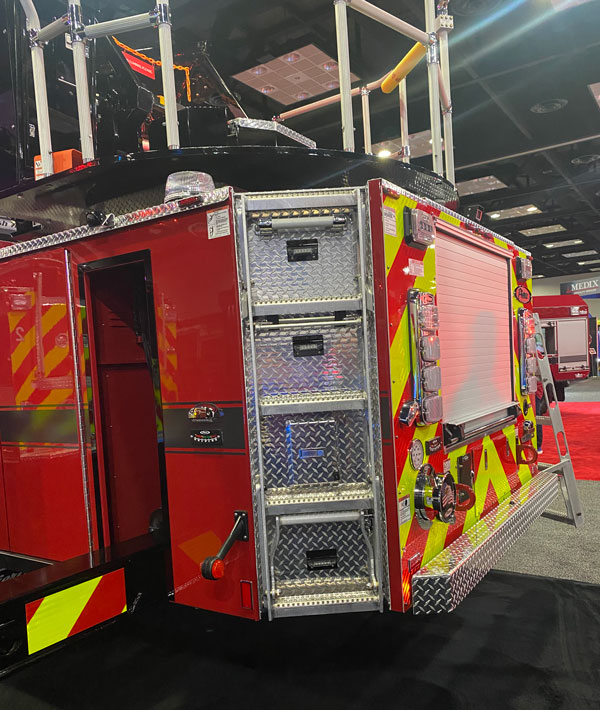
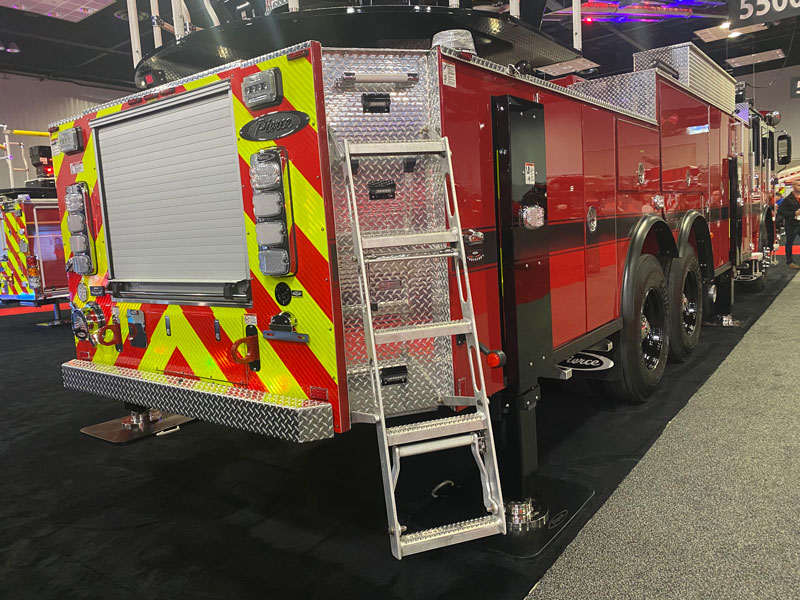
13. 14. Pierce’s pull-out drop-down turntable access ladders angled into the rear corners of the rig help cut down on the back-swing when cornering.
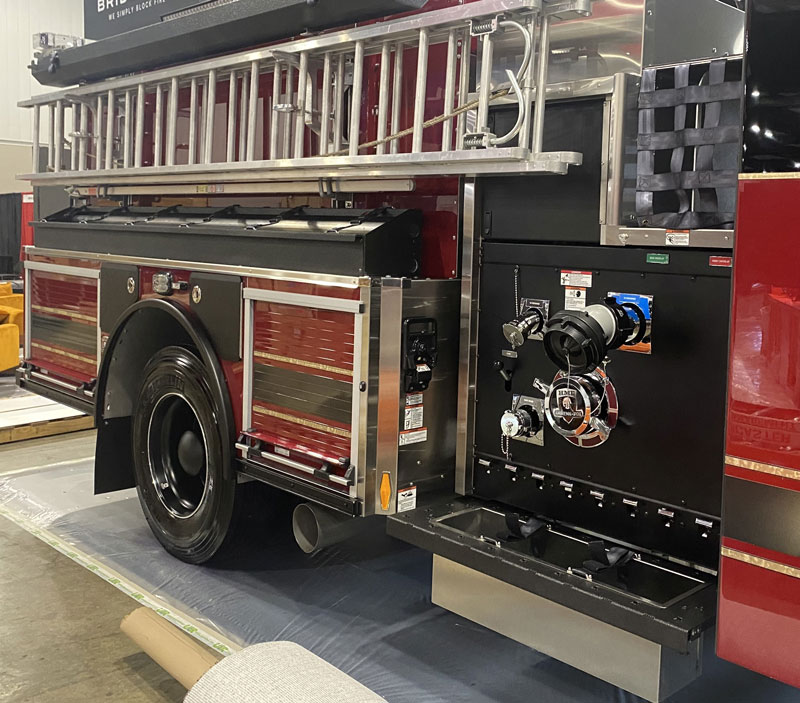
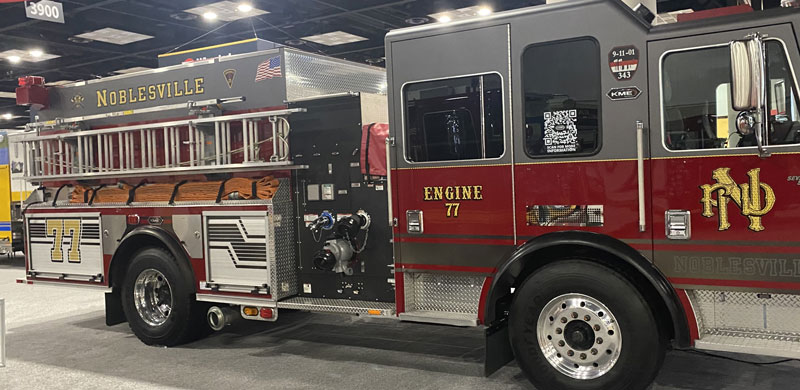
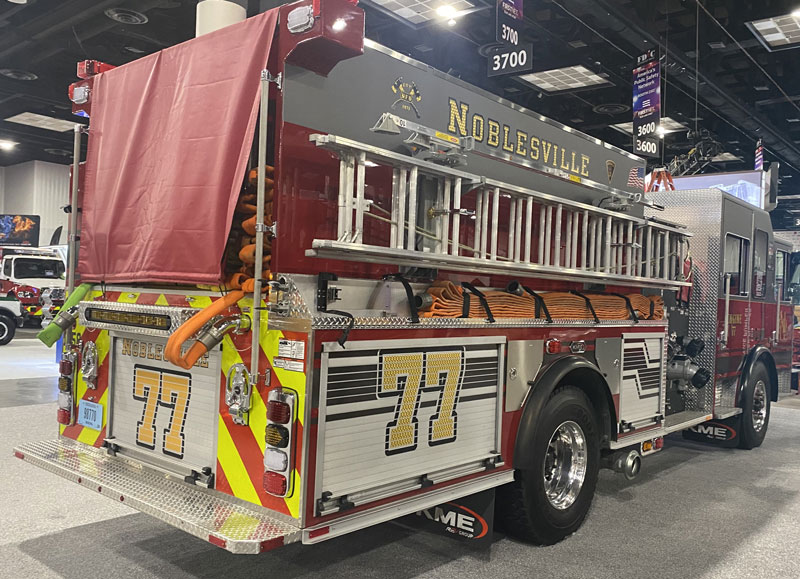
15. 16. 17. I have an aversion against capped hose connections on a fire truck, feeling something could be preconnected to them. The 2.50-inch discharge on the HME-Ahrens Fox in Photo 15 (top) could be used to preconnect a line in the high-rise pack hose storage over the side compartments. A short stubby piece of LDH could be preconnected to the LDH discharge and stored in the running board hose well. What’s the difference if you disconnect a cap or a piece of hose if the hose connection is needed for something else?
At the show, I stared at the hose storage above the side compartments on the KME in Photo 16 (middle) trying to figure out why it wasn’t full. I mentioned it to another observer and said they could slap a nozzle on it and preconnect it to the capped side 2.50-inch discharge. It would be an inexpensive preconnect. He took the wind out of my sails saying they already had two rear 2.50-inch preconnects (Photo 17) and the empty area above the side compartments was probably for a ground monitor. The crosslays on this KME and the preceding HME-Ahrens Fox appear to be lower than normal. A quick check is to compare the bottom of the lays to the bottom of a custom cab’s windows or to just above low side compartment tops. Should be around 66-inches. Purchasing specs should stipulate a maximum height from ground level rather than saying crosslays shall be lower than normal.

18. These powered drop-down access steps on this rescue could be described as heavy duty. I wouldn’t want to stand too close to the door when they are activated.
BILL ADAMS is a member of the Fire Apparatus & Emergency Equipment Editorial Advisory Board, a former fire apparatus salesman, and a past chief of the East Rochester (NY) Fire Department. He has 50 years of experience in the volunteer fire service.

